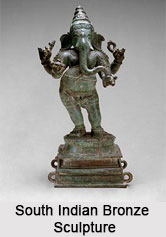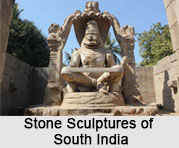 Types of South Indian Sculptures began to evolve in the early era and the early medieval era, from the time of Chalukyas, Pandya Dynasty, Chola Dynasty, and Pallava Dynasty, the art and architecture of South Indian temples and the archaeological sites of South India. Some of the popular archaeological areas and the places of historical importance are Archaeological Museum in Hampi, Arikamedu, Badami, Belur, Edakkal caves, Elephant Stables in Hampi, Halebidu, Hassan District, Kavala Caves, Mahabalipuram, Queen"s bath in Hampi, Ranganathaswamy temple, Talakad, Tulapurushandana, Vitala Temples and Warangal.
Types of South Indian Sculptures began to evolve in the early era and the early medieval era, from the time of Chalukyas, Pandya Dynasty, Chola Dynasty, and Pallava Dynasty, the art and architecture of South Indian temples and the archaeological sites of South India. Some of the popular archaeological areas and the places of historical importance are Archaeological Museum in Hampi, Arikamedu, Badami, Belur, Edakkal caves, Elephant Stables in Hampi, Halebidu, Hassan District, Kavala Caves, Mahabalipuram, Queen"s bath in Hampi, Ranganathaswamy temple, Talakad, Tulapurushandana, Vitala Temples and Warangal.
South Indian Bronze Sculpture
The south Indian Bronze Sculpture was highly influenced by Shaivism. It is because, in the early ages, Shaivasim was one of the main sects in Hindu religion. The south Indian metal sculptures were predominantly made of bronze with a large copper content. The canons of proportion were similar to that of the Buddhist sculptures of Southern part of India and the western part of India. The number of statues of bronze in early South India is concentrated in Andhra Pradesh, Telangana, Kerala, Karnataka and Tamil Nadu. There are three distinct poses employed to express the spiritual qualities of special deities of Shaiva sect. These poses included a directly frontal, static position reserved for gods in a state of complete spiritual equilibrium, poses in which the image was broken more or less violently at two or three points of its axis and a pose reserved for the great gods personifying cosmic movement or function. <
Importance of Mudras in South Indian Sculpture
 Mudras were also depicted in South Indian bronze sculptures. The mudras that depicted in South Indian art and architecture are Pranayama, Padmasana, Sukhasana and Vajrasana. There is a fixed pattern of head-dresses and jewellery that were used to drape the icons deities of the Hindu Gods and Goddess.
Mudras were also depicted in South Indian bronze sculptures. The mudras that depicted in South Indian art and architecture are Pranayama, Padmasana, Sukhasana and Vajrasana. There is a fixed pattern of head-dresses and jewellery that were used to drape the icons deities of the Hindu Gods and Goddess.
Style of South Indian Sculpture
There is a varied style of South Indian Sculpture. Over years, the style of South Indian sculptures has undergone numerous transformations owing to the different patrons that engaged in sculpturing.
Stone Sculptures of South India
Stone sculptures of south India mostly embellish the temple walls of different religions whereas bronze sculptures were mainly for processional images during special occasions. There are different varieties of granites used for stone sculpture. Mostly the bronze sculptures exhibit round and well finished modeling, whereas those of stone have deep relief. The art has also found expression through terracotta, copper, brass, glass and white marble sculptures.
Miniature Towers in South India Sculpture
Another special feature of the south Indian temple sculpture is the miniature towers. The sculptors of Vijaynagara Empire used soapstone as it is soft and easily carved. During the period of Vijaynagara rule, the local hard granite was preferred, which was once in the hot list of Badami Chalukya Era. The use of granite reduced the density of sculptured works. As granite is prone to flaking, few pieces of individual sculptures reached the high levels of quality seen in previous centuries. In order to cover the unevenness of the stone used in sculptures, artists employed plaster to give the rough surface a smooth finish and painted it thereafter with lively colours.
Concentration of South Indian Sculpture
The south Indian temple sculpture comprises of the sculptures of temples of Andhra Pradesh, Karnataka, Kerala and Tamil Nadu. These states have been ruled by various dynasties which include Pallavas, Chalukyas, Viajayanagar Empire, Kakatiyas, Cholas, Rashtrakutas and Gangas.
Advancement of South Indian Sculpture in India
The south Indian sculpture in different temples and archaeological sites received an added boost under the reign of the Cholas and Chalukyas. While the Vijayanagara Empire immortalised their art and sculpture on stone in Hampi, kingdoms of Chalukyas and Cholas are renowned for their massive temples, which are now in the hands of Archaeological Survey of India. These beautiful erections even today spell out the grandeur and splendour that once accompanied them.



